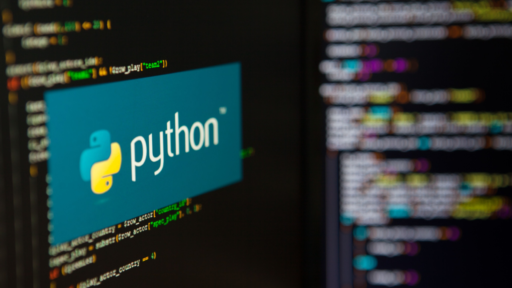BlackBerry’s latest Global Threat Intelligence Report reveals a 53% increase in unique malware samples detected daily, averaging 11,500. The company stopped 3.7 million cyberattacks from April to June 2024, an 18% increase from the previous period. Critical infrastructure remained a prime target, with over 800,000 attacks, 50% focusing on the financial sector.
Key findings include:
Geopolitical tensions fueling cyberattacksCritical infrastructure facing sophisticated threatsCommercial enterprise attacks up by 58%Deepfake technology improvingEmerging ransomware groups like BlackSuit and Space Bears causing concern
The report predicts continued targeting of private data, especially in healthcare and financial services sectors. BlackBerry has partnered with the Royal Canadian Mounted Police’s NC3 to highlight law enforcement insights on cybercrime trends.
Il rapporto Global Threat Intelligence Report di BlackBerry rivela un aumento del 53% nei campioni unici di malware rilevati quotidianamente, con una media di 11.500. L’azienda ha bloccato 3,7 milioni di attacchi informatici da aprile a giugno 2024, con un aumento del 18% rispetto al periodo precedente. Le infrastrutture critiche sono rimaste un obiettivo primario, con oltre 800.000 attacchi, di cui il 50% rivolti al settore finanziario.
I risultati chiave includono:
Tensioni geopolitiche che alimentano gli attacchi informaticiInfrastrutture critiche affrontano minacce sofisticateAumenti degli attacchi alle imprese commerciali del 58%Miglioramenti nella tecnologia deepfakeGruppi di ransomware emergenti come BlackSuit e Space Bears suscitano preoccupazione
Il rapporto prevede un continuo targeting dei dati privati, specialmente nei settori della sanità e dei servizi finanziari. BlackBerry ha collaborato con il NC3 della Royal Canadian Mounted Police per evidenziare le intuizioni delle forze dell’ordine sulle tendenze nella criminalità informatica.
El último Informe Global de Inteligencia de Amenazas de BlackBerry revela un aumento del 53% en las muestras únicas de malware detectadas diariamente, con un promedio de 11,500. La compañía detuvo 3.7 millones de ciberataques de abril a junio de 2024, un aumento del 18% con respecto al período anterior. La infraestructura crítica continuó siendo un objetivo principal, con más de 800,000 ataques, el 50% de los cuales se centraron en el sector financiero.
Los hallazgos clave incluyen:
Tensiones geopolíticas que alimentan los ciberataquesLa infraestructura crítica enfrenta amenazas sofisticadasAumentos del 58% en los ataques a empresas comercialesMejoras en la tecnología deepfakeGrupos de ransomware emergentes como BlackSuit y Space Bears generan preocupación
El informe predice un continuo ataque a los datos privados, especialmente en los sectores de salud y servicios financieros. BlackBerry se ha asociado con el NC3 de la Real Policía Montada de Canadá para resaltar las perspectivas de las fuerzas del orden sobre las tendencias del cibercrimen.
블랙베리의 최신 글로벌 위협 정보 보고서는 일일 고유 맬웨어 샘플이 53% 증가했으며, 평균 11,500개로 보고했습니다. 이 회사는 2024년 4월부터 6월까지 370만 건의 사이버 공격을 차단했으며, 이는 이전 기간보다 18% 증가한 수치입니다. 중요 인프라는 여전히 주요 타겟이었고, 800,000건 이상의 공격이 발생했으며, 그 중 50%가 금융 부문에 집중되었습니다.
주요 발견 사항은 다음과 같습니다:
지정학적 긴장이 사이버 공격을 촉진중요 인프라가 정교한 위협에 직면상업 기업 공격이 58% 증가딥페이크 기술이 발전BlackSuit 및 Space Bears와 같은 신생 랜섬웨어 그룹이 우려를 야기
보고서는 특히 의료 및 금융 서비스 분야에서 개인 데이터에 대한 지속적인 공격을 예측하고 있습니다. 블랙베리는 캐나다 로얄 마운티드 폴리스의 NC3와 협력하여 사이버 범죄 동향에 대한 법 집행 인사이트를 강조했습니다.
Le dernier rapport mondial sur l’intelligence des menaces de BlackBerry révèle une augmentation de 53% des échantillons uniques de logiciels malveillants détectés quotidiennement, avec une moyenne de 11 500. L’entreprise a stoppé 3,7 millions d’attaques cybernétiques d’avril à juin 2024, soit une augmentation de 18% par rapport à la période précédente. Les infrastructures critiques sont restées une cible majeure, avec plus de 800 000 attaques, dont 50% visant le secteur financier.
Les principaux résultats comprennent :
Des tensions géopolitiques alimentant les cyberattaquesDes infrastructures critiques confrontées à des menaces sophistiquéesLes attaques contre les entreprises commerciales augmentent de 58%La technologie deepfake s’amélioreDes groupes de ransomware émergents comme BlackSuit et Space Bears suscitent des inquiétudes
Le rapport prévoit une poursuite de la cible des données privées, en particulier dans les secteurs de la santé et des services financiers. BlackBerry a établi un partenariat avec le NC3 de la Gendarmerie royale du Canada pour mettre en lumière les informations des forces de l’ordre sur les tendances de la cybercriminalité.
Der neueste Global Threat Intelligence Report von BlackBerry zeigt einen Anstieg von 53% bei den täglich erkannten einzigartigen Malware-Proben, mit einem Durchschnitt von 11.500. Das Unternehmen hat 3,7 Millionen Cyberangriffe von April bis Juni 2024 verhindert, was einem Anstieg von 18% im Vergleich zum vorherigen Zeitraum entspricht. Kritische Infrastruktur blieb ein zentrales Ziel, mit über 800.000 Angriffen, von denen 50% auf den Finanzsektor abzielten.
Wichtige Erkenntnisse umfassen:
Geopolitische Spannungen, die Cyberangriffe anheizenKritische Infrastruktur ist komplexen Bedrohungen ausgesetztAngriffe auf Unternehmen haben um 58% zugenommenDeepfake-Technologie verbessert sichNeu auftauchende Ransomware-Gruppen wie BlackSuit und Space Bears verursachen Besorgnis
Der Bericht prognostiziert eine anhaltende targeting von privaten Daten, insbesondere in den Bereichen Gesundheit und Finanzdienstleistungen. BlackBerry hat sich mit der NC3 der Royal Canadian Mounted Police zusammengetan, um Einblicke der Strafverfolgungsbehörden zu den Trends im Cybercrime hervorzuheben.
Positive
Detection of 11,500 unique malware samples daily, showcasing strong cybersecurity capabilities
Stopped 3.7 million cyberattacks from April to June 2024
Partnership with Royal Canadian Mounted Police’s NC3 for improved public-private cooperation on cybersecurity
Negative
53% increase in unique malware samples detected daily
18% increase in total number of cyberattacks compared to the previous reporting period
25% increase in attacks targeting the financial sector
58% increase in commercial enterprise attacks
Insights
The 53% increase in unique malware samples detected daily is a significant trend, indicating heightened sophistication in cyber threats. This surge, coupled with an 18% rise in total attacks, underscores the evolving nature of cybercrime.
The focus on critical infrastructure, particularly the 25% increase in attacks on the financial sector, is alarming. It suggests a strategic shift by threat actors towards high-value targets. The preference for unique malware in these attacks indicates a move towards quality over quantity, potentially increasing the success rate and impact of breaches.
The 58% increase in commercial enterprise attacks highlights the expanding attack surface due to the proliferation of connected devices. This trend, combined with the rise of deepfake technology and the exploitation of geopolitical tensions, presents a complex and dynamic threat landscape for businesses and individuals alike.
The surge in cyberattacks, particularly those targeting critical infrastructure and the financial sector, poses significant financial risks. The 25% increase in attacks on the financial sector could lead to higher cybersecurity insurance premiums and potential losses from data breaches or service disruptions.
For BlackBerry (NYSE:BB), this report demonstrates the company’s strong position in the cybersecurity market. The ability to detect and stop an average of 11,500 unique malware samples daily showcases their product efficacy. However, the rapidly evolving threat landscape may necessitate increased R&D spending to maintain competitive edge.
Investors should consider the potential for revenue growth in BlackBerry’s cybersecurity segment, balanced against the need for ongoing investment in threat intelligence and product development to stay ahead of emerging threats like deepfakes and new ransomware groups.
09/24/2024 – 06:05 AM
The high increase in novel hashes shows malware developers are rapidly updating and adapting their code to be more resilient.
WATERLOO, ON / ACCESSWIRE / September 24, 2024 / BlackBerry Limited (NYSE:BB)(TSX:BB) today released its latest Global Threat Intelligence Report, revealing that BlackBerry® cybersecurity solutions detected and stopped an average of 11,500 unique malware samples daily, up 53 percent from the previous reporting period. This is one of the highest quarter-over-quarter increases since shifting from yearly threat reports.
The company stopped a total of 3.7 million cyberattacks (43,500 per day) from April to June 2024, an 18 percent increase in the total number of attacks from the last reporting period. Critical Infrastructure remained a top target this quarter, with over 800,000 attacks, 50 percent of which focused on the financial sector. Attacks targeting this sector increased 25 percent overall compared to the last reporting period.
“As new threat groups emerge and legacy threat groups survive takedown attempts, they focus on developing new malware. This signals that these groups are allocating their resources to prioritize the impact of their attacks rather than sheer volume,” said Ismael Valenzuela, Vice President of Threat Research and Intelligence at BlackBerry. “Additionally, minor altering of a piece of malware might not seem very sophisticated but contributes to an overwhelming increase in the success and severity of attacks.”
Key takeaways from the latest BlackBerry® Global Threat Intelligence Report include:
Geopolitical tensions feed cyberattacks: Cyberwarfare is an important aspect of ongoing conflicts between Russia and Ukraine, Israel and Hamas, and tensions in the South China Seas, among several others. In addition, as many countries hold national elections, disinformation and other forms of cyber disruption are on the radar of electoral authorities.
Critical infrastructure is a continuous threat: Geopolitical hostilities have also fed the continued rise in attacks against critical infrastructure globally. Critical infrastructure attacks saw the most significant use of unique malware this quarter compared to other industries, but a lower volume in total. BlackBerry telemetry indicates that threat actors prioritize unique malware in attacks against critical infrastructure due to its higher likelihood of success.
Commercial enterprise attacks increased by 58 percent: As the number of enterprise devices grow, from point-of-sale terminals to mobile phones, scanners and printers, there are many more opportunities for cyber attackers to break into enterprise networks. Commercial enterprises include manufacturing, capital goods, commercial and professional services, and retail. Capital goods, which provide for manufacturing equipment and office machinery, comprised 66 percent of all “attacks stopped” in this category.
Deepfake technology improving: Deepfakes – digitally manipulated images, video, or audio – are being used to convince recipients that an email, phone call, or even a real-time video call is from a person or organization they know and trust when, in fact, it’s an attacker pretending to be that person or entity. Deepfakes are becoming increasingly convincing, as highlighted in BlackBerry’s recent Deepfakes white paper. This is also contributing to a rise in attacks that rely on social engineering tactics to succeed.
The weaponization of chaos: In cybersecurity, any type of disruption to daily life provides fertile ground for malicious actors to exploit confusion and misinformation. During wars, natural disasters, IT outages, or any significant disruption to the normal flow of communication and data (as was seen in this reporting period amid U.S. election shakeups and the CrowdStrike outage), moments of instability provide plenty of opportunities for cybercriminals. Threat actors are continually ready to take advantage of chaos using phishing emails, misleading social media posts, and malicious software.
New cybercriminals are entering the space and quickly becoming large-scale threats: While legacy groups like LockBit remain a top threat, smaller emerging ransomware groups like BlackSuit and Space Bears are a cause for concern.
Based on its data analysis, the BlackBerry Threat Intelligence and Research team predicts that threat actors will continue to take extensive measures to target their victims carefully and with more sophisticated methodology. A rise in new malware and infostealers indicates that private data will continue to be highly sought after by threat actors, where sectors like healthcare and financial services will be top targets for attack.
Also new in this edition, BlackBerry has partnered with the Royal Canadian Mounted Police’s National Cybercrime Coordination Centre (NC3) to highlight key insights from law enforcement on cybercrime trends. BlackBerry is proud to collaborate with law enforcement agencies around the world to improve public-private cooperation on cybersecurity.
Download a copy of BlackBerry’s Global Threat Intelligence Report at BlackBerry.com, and register to attend the Global Threat Intelligence Report Deep Dive webinar on Thursday, September 26th at 11:00 am EDT to discover more.
About BlackBerry
BlackBerry (NYSE:BB)(TSX:BB) provides intelligent security software and services to enterprises and governments worldwide. The company’s software powers over 235M vehicles. Based in Waterloo, Ontario, the company leverages AI and machine learning to deliver innovative solutions in the areas of cybersecurity, safety, and data privacy solutions and is a leader in the areas of endpoint management, endpoint security, encryption, and embedded systems. BlackBerry’s vision is clear – to secure a connected future you can trust.
For more information, visit BlackBerry.com and follow @BlackBerry.
Trademarks, including but not limited to BLACKBERRY and EMBLEM Design, are the trademarks or registered trademarks of BlackBerry Limited, and the exclusive rights to such trademarks are expressly reserved. All other trademarks are the property of their respective owners. BlackBerry is not responsible for any third-party products or services.
# # #
Media Contacts:
BlackBerry Media Relations
+1 (519) 597-7273
mediarelations@BlackBerry.com
SOURCE: BlackBerry
View the original press release on accesswire.com
FAQ
What is the percentage increase in unique malware detected by BlackBerry (BB) in the latest report?
BlackBerry (BB) reported a 53% increase in unique malware samples detected daily in its latest Global Threat Intelligence Report.
How many cyberattacks did BlackBerry (BB) stop between April and June 2024?
BlackBerry (BB) stopped a total of 3.7 million cyberattacks from April to June 2024, which averages to 43,500 attacks per day.
What sector was the primary target for cyberattacks according to BlackBerry’s (BB) report?
According to BlackBerry’s (BB) report, critical infrastructure remained a top target, with over 800,000 attacks, 50% of which focused on the financial sector.
What is the percentage increase in commercial enterprise attacks reported by BlackBerry (BB)?
BlackBerry (BB) reported a 58% increase in commercial enterprise attacks in its latest Global Threat Intelligence Report.
https://www.stocktitan.net/news/BB/black-berry-reports-53-percent-increase-in-unique-malware-used-in-y85kb2zi7vt1.html






